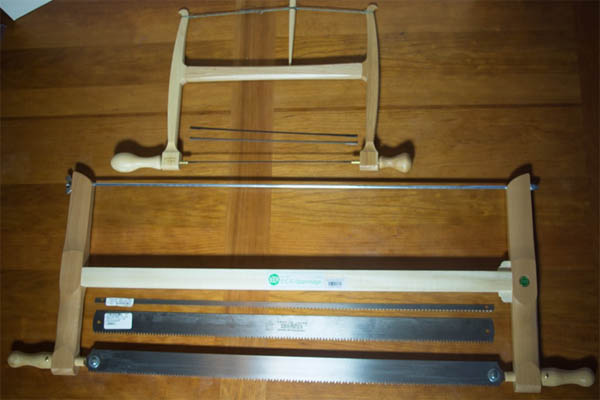Comparing Handsaws and Power Saws: Navigating Precision and Efficiency
In the world of woodworking and construction, the saw stands as a defining tool, shaping raw materials into functional and artistic creations.
As the industry evolves, a choice emerges between the timeless precision of handsaws and the modern efficiency of power saws.
This comprehensive guide delves into the intriguing comparison between these two categories, exploring their types, advantages, accuracy, safety considerations, skill requirements, costs, and more.
By understanding the nuances of handsaws and power saws, you empower yourself to make informed decisions that align with your project goals and woodworking preferences.
Handsaws: Tradition and Precision
Embodying the legacy of craftsmanship, handsaws resonate with precision and artistry:
- Introduction to Handsaws: These manual tools have been a cornerstone of woodworking for generations.
- Types of Handsaws: Crosscut saws, rip saws, backsaws, and coping saws each bring their unique capabilities to the table.
- Advantages of Handsaws: Precision, control, quiet operation, portability, and simplicity are the hallmarks of handsaws.
Power Saws: Efficiency and Automation
In the age of automation, power saws exemplify speed and versatility:
- Introduction to Power Saws: Powered by electricity or batteries, power saws embrace efficiency and automation.
- Types of Power Saws: Circular saws, jigsaws, reciprocating saws, and band saws empower woodworkers with diverse cutting capabilities.
- Advantages of Power Saws: Speed, automation, versatility, and the capacity to tackle larger projects are the defining attributes of power saws.
Accuracy and Precision
Precision is a crucial factor, influenced differently by each category:
- Handsaws: They excel in controlled cuts and intricate detailing, allowing artisans to craft delicate masterpieces.
- Power Saws: Equipped with laser guides, measurements, and adjustable bevel and angle settings, power saws enhance accuracy in larger-scale projects.
Workload and Project Scale
The scope of your project often dictates the choice between handsaws and power saws:
- Handsaws: Ideal for smaller projects requiring fine detailing and meticulous craftsmanship.
- Power Saws: Suited for larger projects, they offer efficient material cutting and speed in construction.
Safety Considerations
Safety is paramount when choosing between handsaws and power saws:
- Handsaw Safety: Manual operation reduces the risk of kickback, offering greater control over the tool.
- Power Saw Safety: The potential for kickback exists due to power-driven cutting. Proper usage and safety features are vital for safe operation.
Skill Level and Learning Curve
Consider your skill level and willingness to learn when selecting the appropriate saw:
- Handsaws: Skill development and mastery are essential for achieving precise cuts.
- Power Saws: They have a learning curve but offer adaptability and speed once proficiency is attained.
Cost and Investment
Understanding the costs associated with both saw categories is crucial:
- Handsaws: Generally have a lower initial cost, making them accessible for beginners and those on a budget.
- Power Saws: Require a higher investment due to equipment cost, potential maintenance expenses, and the need for safety gear.
Environment and Noise
Consider the environmental impact and noise levels associated with your chosen saw:
- Handsaws: Operate quietly, making them suitable for indoor and noise-sensitive environments.
- Power Saws: Generate more noise due to their powered operation, potentially requiring hearing protection.
Project Examples
Examples illustrate the suitability of each type of saw for various projects:
- Handsaw Projects: Fine joinery, delicate moldings, and intricate woodwork thrive with handsaws.
- Power Saw Projects: Framing, construction, and large-scale material cutting are efficiently executed with power saws.
Choosing the Right Saw for the Job
Selecting the appropriate saw involves a balance between precision, efficiency, and safety:
- Factors Influencing Choice: Project scope, desired level of precision, available workspace, and your skill level.
- Assessing Project Requirements: Determine your project’s requirements to guide your choice between handsaws and power saws.
Conclusion
The dynamic interplay between handsaws and power saws showcases the marriage of tradition and innovation in woodworking.
By delving into the intricacies of each category, you open the gateway to a world of creative possibilities.
Whether you favor the fine craftsmanship of handsaws or the rapid efficiency of power saws, understanding their attributes equips you to transform raw materials into works of art with precision, finesse, and efficiency.
In the tapestry of woodworking, handsaws and power saws are the threads that weave innovation and tradition into every cut, embodying the heart and soul of the artisan’s craft.

Don Kerr spent many years honing his skills as a DIY woodworker. He finds immense joy in not only creating remarkable pieces but also in generously sharing his knowledge. Connect with him via group.



